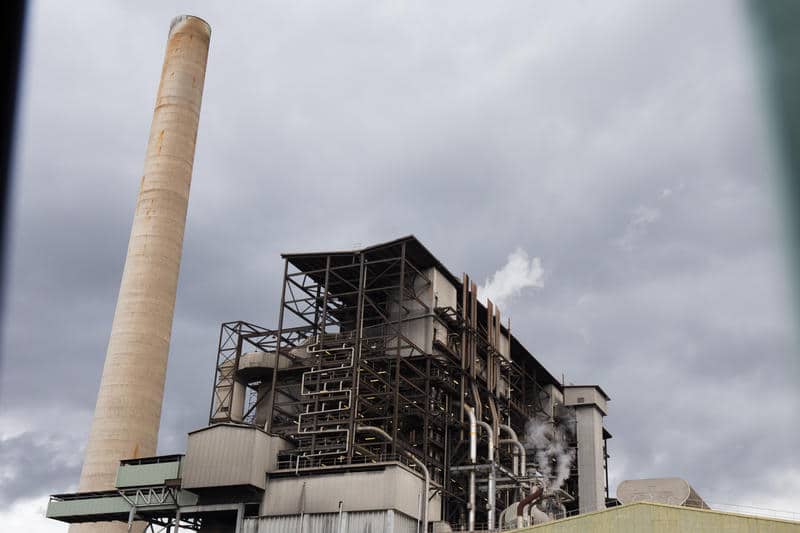The report, commissioned by Greenpeace Australia Pacific, found that investment aligned with the New South Wales energy infrastructure roadmap will provide a cheaper and lower emissions option to replace the 2 GW power station compared to the Federal Government’s plan to build a new gas generator in the Hunter region.
With Liddell due to shut down completely by April 2023, Reputex modelled three scenarios for the National Electricity Market (NEM) to replace the lost capacity. The reference case tracks current policies which are projected to deliver 2.6 GW of new renewables into the NEM by July 2023. The second scenario sees the market build an additional 1 GW of wind and solar projects. The third scenario entails 1 GW of new peaking gas added to the NEM by July 2023.
Reputex found the renewable-powered market solution is 17% cheaper than replacing the coal-fired power station with gas and will result in fewer emissions. The predicted wholesale electricity price under the market solution by 2026 is $35 per MWh versus $42 MWh for the gas scenario. Under all three scenarios, reliability exceeds the state’s Energy Security Target after the closure of Liddell.
Greenpeace Australia Pacific head of research and investigations, Nikola Casule, said the report builds on growing evidence that clean energy should be at the centre of federal energy policy, driven by the declining cost and increasing reliability of renewables.
“This new report shows conclusively that renewable energy is the best option for replacing Australia’s coal-burning power stations,” he said.
“Building new gas infrastructure is an expensive, unnecessary diversion that won’t reduce emissions. Replacing coal with gas is like replacing a typewriter with a fax machine – they’re both obsolete technologies that no longer meet Australia’s energy needs.”
Roadmap on right track
The report provides fresh support for the NSW Government’s $32 billion electricity infrastructure roadmap which will support 12 GW of renewable energy and 2 GW of energy storage over the next decade. The plan also allows for approvals for transmission infrastructure in five new renewable energy zones – including one slated for the Hunter region – to be fast-tracked.
NSW Environment and Energy Minister Matt Kean described the renewable energy zones as being the modern equivalent of the coal-power power stations that they will replace.
Casule said with more and more “ageing and unreliable coal-burning power stations like Liddell” set to close in the coming years, now is the time for the Federal Government to reject its plans for a “gas-led recovery”.
“The operator of Australia’s grid, AEMO, has already found that we can move to a renewable-powered grid without the need for any new gas,” he said.
“The Federal Government needs to support the best way to secure Australia’s energy supply, bring down prices and create future-proof jobs, replacing coal and gas with clean energy technology like wind and solar.”
Simon Holmes à Court, senior advisor to the Climate and Energy College at Melbourne University, said the Reputex report demonstrates that by continuing to add renewables and storage to NSW’s grid, the state will enjoy reliable power that’s cheaper and much better for the environment than gas.
“Renewables firmed with storage solves the so-called ‘energy trilemma’ — affordable, reliable and cleaner power,” he said.
“The Federal Government’s obsession with fossil gas is undermining private sector investment in our energy system. Economics and technology have overtaken the Federal Government’s ideology. It needs to drop the obsession with gas, and let the market complete the clean replacement of Liddell — a transition that is creating jobs for the Hunter and securing a lower cost, reliable energy supply.
“Business, state governments of all stripes, and Australia’s major trading partners are all ditching coal and gas for renewables and storage because the economics overwhelmingly win out.”
This content is protected by copyright and may not be reused. If you want to cooperate with us and would like to reuse some of our content, please contact: editors@pv-magazine.com.









1 comment
By submitting this form you agree to pv magazine using your data for the purposes of publishing your comment.
Your personal data will only be disclosed or otherwise transmitted to third parties for the purposes of spam filtering or if this is necessary for technical maintenance of the website. Any other transfer to third parties will not take place unless this is justified on the basis of applicable data protection regulations or if pv magazine is legally obliged to do so.
You may revoke this consent at any time with effect for the future, in which case your personal data will be deleted immediately. Otherwise, your data will be deleted if pv magazine has processed your request or the purpose of data storage is fulfilled.
Further information on data privacy can be found in our Data Protection Policy.